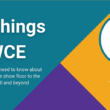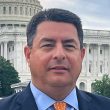Thank you for your contributions
Years ago, I used to chide the FCC for creating rules it rarely enforced. Seemingly, the only thing you couldn’t get away with was pirate radio. But things have changed.
The FCC issued Notices of Apparent Liability at a brisk rate this year. Admittedly, it wasn’t quite like the enforce-a-thon two years ago for failure to file CPNI reports. That effort initially dinged more than 600 licensees for $20,000 each (around $12 million total), but the FCC didn’t collect most of that money because many of the cases involved minor oversight problems, so the fines were reduced substantially. Still, the Enforcement Bureau is on the march.
The Enforcement Bureau started slowly this time around, issuing only eight NALs totaling $130,000 in fines in January — in the old days, this would have been remarkable — but by the third week in June, the bureau had issued 118 notices, representing almost $15.2 million in fines. We are talking one serious enforcement effort here. June was an especially busy month, with millions in fines being demanded.
What is remarkable about the NALs is that they are for myriad violations. It used to be that the FCC would get serious about a particular issue, for example tower lighting, and would issue a host of NALs for that rule violation. The agency would crank up the mimeograph and churn out the same NAL, just changing the name of the recipient. Now, the FCC is looking at various areas for enforcement and is issuing NALs whenever and wherever evil is found.
Some people have postulated that the increased levels of enforcement are intended to generate revenue, a kind of speed trap to help the U.S. Treasury slow down that national debt ticker Congress keeps showing us. And there may be some truth to that, but I’m not fully convinced.
Unlike years past, the FCC does not have some new wireless application or technology to ponder. And Janet Jackson hasn’t popped out of anything lately. Instead, we’re seeing improvements to existing technology without groundswell for the FCC to take on larger, broader policy issues. Meanwhile, new site-based licensing efforts have slowed in all areas but public safety, and license terms generally are extended. The only nettlesome, labor-intensive area is related to narrowbanding.
With a reduction in administrative duties to keep the agency’s work up to date, the FCC has manhours it can devote to enforcing the rules it has, rather than creating new rules. Therefore, if they’ve got the time, they’ll find your crime, and you’ll pay a dime — or two or three.
So, what does this mean to you? The truth is that there is still only about a 1 in 10,000 chance that you will get an NAL and have to pay a five-figure fine. Those sound like great odds, but they don’t reveal the whole truth. When the number of NALs go up, so too do the number of complaints. Spurred on by what appears to be heightened interest from the Enforcement Bureau, competitors for spectrum or market advantage often take a cue from the bureau and start sending fink mail to the FCC.
These letters and complaints usually are resolved without a fine, but the effort often requires time and legal expense. You may not be writing a check to the Treasury, but the experience will cost you all the same.
There’s no reason to get paranoid, but now just might be a really good time for you to fix those little licensing problems you’ve ignored, like polishing the bulb on your tower and turning down the power on that illegal transmitter. If not, on behalf of the American public, I’d like to thank you for your contribution toward lowering the National debt. Your patriotism — or should I say patsy-ism — is appreciated.
What do you think? Tell us in the comment box below.
Robert H. Schwaninger Jr. is the president of Schwaninger & Associates. He can be reached at [email protected].
Related Stories: More by Robert H. Schwaninger Jr.

















